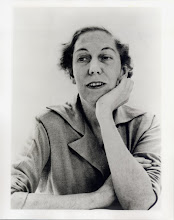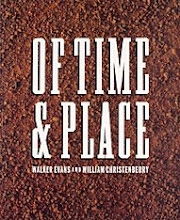"Helen, Blond Girl and Genny"
- Calvin Black (1903–1972) and Ruby Black (1915–1980)
- Yermo, California
- c. 1953–1969
- Paint on redwood and pine with fabric, tin, cotton stuffing, leather holster, and toy pistol
- 34–57 in. high
- American Folk Art Museum, gift of Elizabeth Ross Johnson, 1985.35.3, 4, 7
- These figures once belonged to Possum Trot, a roadside attraction operated for more than twenty-five years by Calvin and Ruby Black. During the Depression, the Blacks, born and raised in the Deep South, headed to California to try their fortunes. In 1953, they moved to a parcel of land near Yermo that they had bought, sight unseen, through a magazine advertisement. Their land, as it turned out, was in the Mojave Desert on a desolate stretch of Highway 15. The Blacks, planning to take advantage of the growing popularity of car travel, opened a rock and mineral shop but did little business. To attract customers, Calvin created an evolving environment that eventually included a carousel and other wind-driven constructions, totem poles, a model train that stretched along the highway, and wooden dolls that posed in tableaux, drove carriages across the shop's roof, and kicked their legs and waved their arms.
Calvin carved and painted the dolls, using fragments of redwood scavenged from fallen telephone poles for the heads and bodies and pine for the legs, arms, and noses. Ruby fashioned clothes for the girls from cast-off dresses and fabric found in the local dump. The Blacks' fifty-seven dolls became the center of their world, and Calvin devised a "Fantasy Doll Show" in a ramshackle building named The Bird Cage Theater. Inspired by his previous work in a carnival, Calvin composed entertaining songs, music, and dialogue that he warbled in a high-pitched voice. He installed tape recorders into the singing figures and attached moving rods to some of their arms and legs to make them dance. The childless couple lavished attention on their dolls, buying them perfume and jewelry from tips that visitors were encouraged to leave for their favorites.
These three figures, all outside dolls, show the effects of the sun, harsh desert wind, and blowing sand. Helen, with articulated limbs, once kicked and waved to catch the attention of passing motorists. Blond Girl is a petite, child-size charmer. Genny, a cowgirl with holster and pistol, is the stereotypical feminine yet self-assured heroine of 1950s Westerns. With their layers of tattered clothes, the dolls evoke the Blacks' persistence in the pursuit of the American Dream.
- This lovely lady sold for $18,500 (do not know her name).
- Top photo by Gavin Ashworth. Copy and photo from American Folk Art Museum. Middle photos Live auctioneers.






















1 comment:
I want to create with such seemingly abandon. No plans, just go with what's on hand and how it speaks to me...A.
Post a Comment